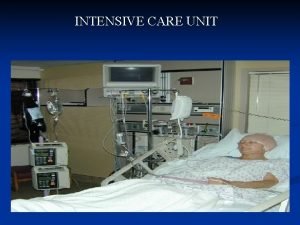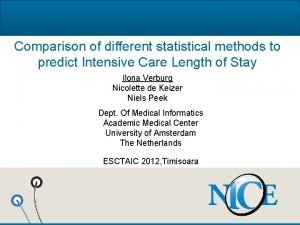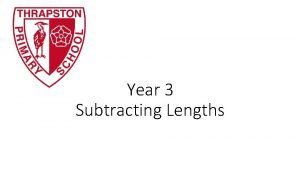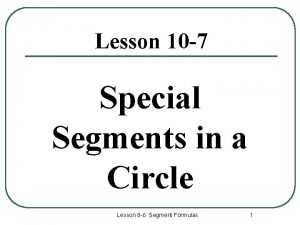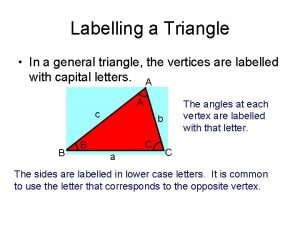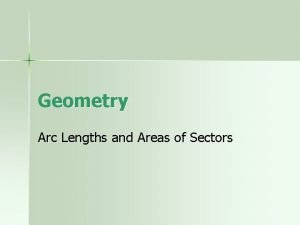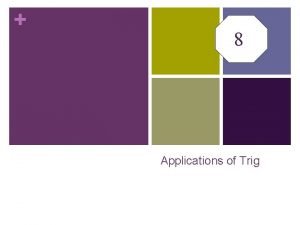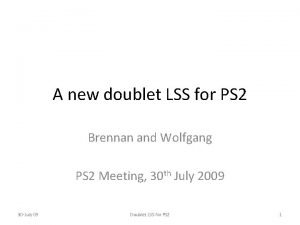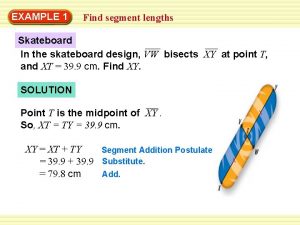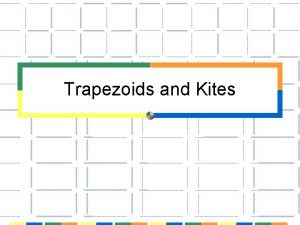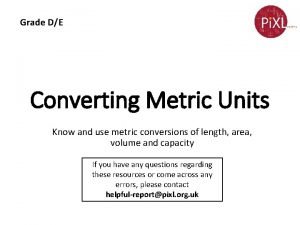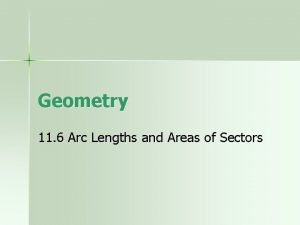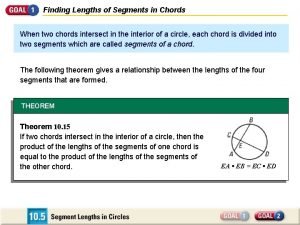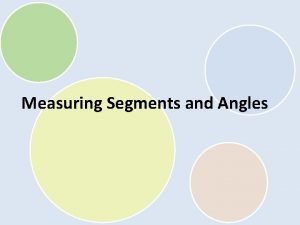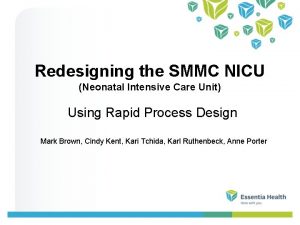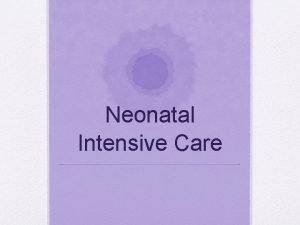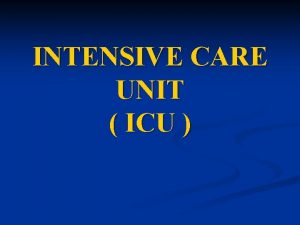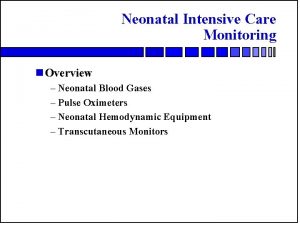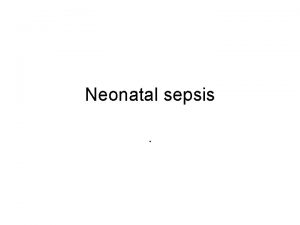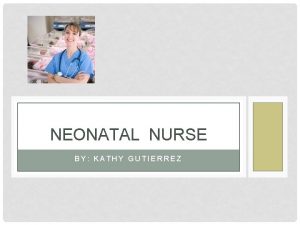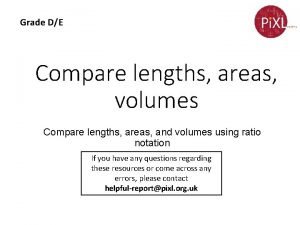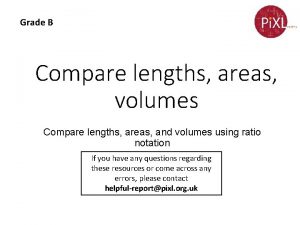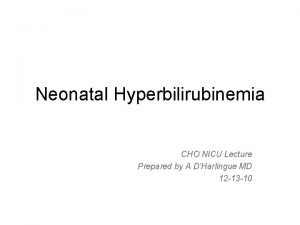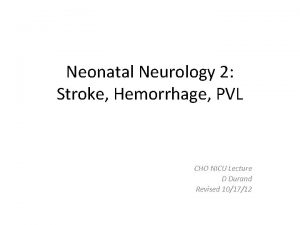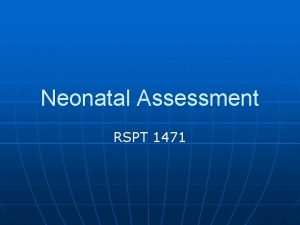LENGTHS IN THE NEONATAL INTENSIVE CARE UNIT NICU





























- Slides: 29

LENGTHS IN THE NEONATAL INTENSIVE CARE UNIT (NICU) AT THE UICH Presented by: Sathia Veeramoothoo Fan Yang

Introduction • Measurements of growth are a good indication of overall well being and outcomes in infants. • Length is a non-invasive measure of skeletal growth. • Accurate measures of length are important for monitoring growth in infants transitioning to home, for high risk and primary care provider follow up, and infant nutrition programs.

Kirsten’s Goals • Increased NP knowledge, confidence, and evidence based techniques for obtaining lengths. • Increased documentation of discharge lengths in EPIC growth chart. • Increased number of lengths in children at risk for growth failure. • Increased reliability, precision and accuracy of lengths measures.

Main Goal • Problem: Measurement of infant lengths using paper tape measures is inaccurate and unreliable. • Purpose: To increase the accuracy, reliability and precision of length measurements in infants in newborn and intensive care units cared for and discharged from UICH.

Data Collection • Design: For each infant a length measurement will be performed four times, twice each by two experienced Nurse Practitioners. • Procedure: • 1. NP 1 - Using tape measure in the envelope, obtain a length using • • standard procedure. 2. NP 1 - Reposition the child and obtain a second measure of the child’s length using an unmarked tape. 3. Give the envelope to another nurse practitioner to obtain repeated length within 24 hours. 4. NP 2 - Using tape measure, obtain a length using standard procedure. 5. NP 2 - Reposition the child and obtain a second measure of the child’s length using an unmarked tape.

Overview of Original Data

Data Re-format using SAS • • • • • /*Reformat data for SAS model fitting. */ data babies. New; set babies; nurse=NP_1; y=NP 1_L 1; treatment="standard"; output; nurse=NP_1; y=NP 1_L 2; treatment="unmarked"; output; nurse=NP_2; y=NP 2_L 1; treatment="standard"; output; nurse=NP_2; y=NP 2_L 2; treatment="unmarked"; output; keep ID GA BW DOL AGA y nurse treatment; run;

Modified Data

Modeling • Rosenberg et al. (1992) essentially performed separate reliability analyses for each method being compared (e. g. paper tape vs. Prematometer). • Using this same tactic for Kirsten’s data, we can model the variability in lengths within each method (marked vs. unmarked) as being caused by one of three sources: 1. baby-to-baby variability 2. nurse-to-nurse variability (inter-rater variability) 3. random noise • The resulting two reliability measures would then be compared to see if one method was more reliable than the other.

Modeling Challenges • Pure within nurse or intra-rater variability: • Nurses did not repeatedly measure the same baby under the exact same conditions (i. e. with the same type of tape). • Intra-baby variability: • We do have two measurements from the same nurse on the same baby, but they were under different conditions (specially, one was done on a marked tape and one was done on an unmarked tape). • Confounding: the difference in these two measurements could be due to a difference in the methods (marked vs. unmarked) or due to intra-rater variability.

Intra-class Correlation and Reliability • With the previously-mentioned three sources of reliability, we can compare the reliability of these two methods of measuring length by comparing the value of their intraclass correlation (ICC). • ICC is used as a measure of how reliable the method is for measuring length is, and it essentially relates the variability between nurses to the variability between babies. • For example, if nurses tend to give the same measurement for a baby, then the ICC will be close to 1.

SAS Code data standard; set babies. Newer; where treatment = “marked"; run; data unmarked; set babies. Newer; where treatment = "unmarked"; run; proc mixed data=marked; class ID nurse; model y = ; random nurse ID; run proc mixed data=unmarked; class ID nurse; model y = ; random nurse ID; run; Covariance Parameter Estimates Covariance Parameter Estimates Cov Parm Estimate nurse 0. 01643 ID 10. 9737 Residual 0. 4204 Cov Parm Estimate nurse 0. 8301 ID 10. 2593 Residual 0. 7103

ICC Values and Interpretation • This suggests the nurses were in better alignment when using the marked tapes. • Limitation: We haven't tested to see if the ICC values are actually statistically significantly different. • Baby-to-baby variability in these two analysis were essentially identical (as would be expected because the same babies were used for both), and it was the difference in the nurse-to-nurse variability across the methods that was the source of the differing ICC values.

More on Reliability • Lack of data: Kirsten has not yet collected data on length boards. • Recommendations for future data collection: • For intra- and inter-rater reliability: • Take two (or more) measurements on each baby with the same nurse AND the same type of measurement instrument • Get these same measurements by a second nurse • For comparing intra-rater reliability for length boards compared to tapes: • Take the above four measurements under each method (length board vs. paper tape)

Kirsten’s Survey and Analysis

Survey – Technique Summary

Survey - continued

Point Data Analysis – Overview of Length

Point Data Analysis – Baby Exposure

Point Data Analysis - Distribution of RF

Point Data Analysis – Exposure by CLD

Point Data Analysis – Exposure by >=1 RF

Point Data Analysis – Other Statistics

Discharge Data Analysis - Overview

Discharge Analysis - Exposure

Comparison of Lengths by Chart Number of lengths Discharge chart Growth chart N=0 1 2. 86% 21 60% N=1 34 97. 14% 14 40% Discharge Length in Growth chart MEAN Discharge Length in Discharge chart N=0 N=1 N=0 0 21 N=1 1 13 Discharge chart Growth chart 0. 97 0. 4

Discharge – Correlation with RF

Summary and Conclusion • More training recommended • New data collection • Better documentation • Positive correlation: number of measurements • With: length of time spent at the UICH • With: presence of at least 1 risk factor • Positive correlation: GA and BW • No correlation: number of measurements & presence of CLD • No significant differences between bays 4 and 5. • Next steps: paired t-tests on the marked and blank tapes • Statistically: Experience and position do not impact on the accuracy of the first three survey questions

Thank you.
 Comfort b pain scale
Comfort b pain scale Fsu nicu mt
Fsu nicu mt Concept of intensive care unit
Concept of intensive care unit Lesson 12-6 segment relationships in circles answers
Lesson 12-6 segment relationships in circles answers Organization of neonatal unit
Organization of neonatal unit Health care levels primary secondary tertiary
Health care levels primary secondary tertiary Intensive care units
Intensive care units Year 3 subtracting lengths
Year 3 subtracting lengths Segment lengths in circles formulas
Segment lengths in circles formulas Finding segment lengths find the value of x
Finding segment lengths find the value of x Find person
Find person 10-7 special segments in a circle brewton
10-7 special segments in a circle brewton How to find side lengths using angles
How to find side lengths using angles Applications of arc length and sectors
Applications of arc length and sectors Circles and lengths of segments 9-7
Circles and lengths of segments 9-7 7-6 proportional lengths
7-6 proportional lengths Compound shapes area and perimeter
Compound shapes area and perimeter Segment lengths in circles formulas
Segment lengths in circles formulas A bridge is supported by triangular braces
A bridge is supported by triangular braces Circumference of a circle maze
Circumference of a circle maze Doublet lengths to avoid
Doublet lengths to avoid Practical design to eurocode 2 lecture 3
Practical design to eurocode 2 lecture 3 Using algebra with segment lengths
Using algebra with segment lengths Trapezoid midsegment theorem
Trapezoid midsegment theorem Electronic spectrum
Electronic spectrum How to identify a right triangle
How to identify a right triangle Converting length
Converting length 11-6 arc lengths and areas of sectors answer key
11-6 arc lengths and areas of sectors answer key The lengths chords
The lengths chords Angle measures and segment lengths
Angle measures and segment lengths


